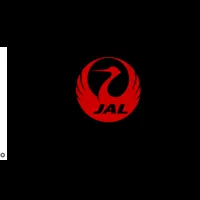
Boom Supersonic Introduces Revolutionary Boomless Cruise Feature for Overture
Boom Supersonic Unveils Game-Changing Boomless Cruise Feature
Boom Supersonic, a pioneering company in the realm of supersonic travel, has made a significant advancement in its mission to provide faster air travel with the recent announcement of its Boomless Cruise feature. This groundbreaking technology allows its upcoming airliner, Overture, to achieve supersonic speeds over land without producing the disruptive sonic booms typically associated with breaking the sound barrier.
During the company's initial supersonic flight test of the XB-1 aircraft on January 28, 2025, Boom showcased the potential of Boomless Cruise. Notably, the XB-1 not only exceeded the speed of sound three times but did so without creating an audible sonic boom that could be heard on the ground. This achievement involved utilizing a phenomenon known as Mach cutoff—a well-established scientific principle that enables sonic booms to refract in the atmosphere and dissipate before they reach the earth's surface. By ascending to high altitudes, the XB-1 broke the sound barrier with exact speed restrictions based on the current atmospheric conditions.
Blake Scholl, the Founder and CEO of Boom Supersonic, commented, “XB-1 broke the sound barrier three times during its first supersonic flight—without an audible boom. This confirms our long-held belief that supersonic travel can be both economical and environmentally considerate for those traveling onboard as well as for everyone on the ground.” He added that with the success of Boomless Cruise, the company can now shift focus on expanding faster travel options on various routes.
To validate the effectiveness of this innovative technology, strategically placed microphone arrays were deployed along the flight path of the XB-1. The feedback gathered during the flight substantiated that sonic booms did not reach the ground, solidifying Boom's sonic boom models. The findings successfully allowed Boom to enhance algorithms predicting operations under the Mach cutoff regimes, ultimately showing that audible sonic booms can potentially be eliminated during supersonic flights over land.
The Boomless Cruise technology will enable the Overture to cruise at speeds of up to Mach 1.3 over land without creating a sound disturbance, significantly cutting down travel times across the United States — by as much as 90 minutes for coast-to-coast flights and drastically accelerating international routes with land segments. The company plans to operate the Overture at around Mach 0.94 when flying over land—a remarkable 20% faster than contemporary subsonic commercial jets—only hitting Mach 1.7, twice as fast, while over water.
This technological marvel relies primarily on the Symphony, Boom's purpose-built propulsion system which enhances transonic thrust allowing Overture to break the sound barrier typically above 30,000 feet—high enough for the physics of Mach cutoff to work effectively. Additionally, Overture’s advanced autopilot will ensure it adapts to real-time conditions to choose the optimal speed for silent travel.
Moreover, Boom anticipates completing thrust production during comprehensive engine core testing of the Symphony system by late 2025. These tests will monitor the performance of the aircraft's engine components, including the compressor, combustor, and turbine sections, collecting crucial data that will refine engineering efforts and promote the fast-tracking of their engine certification process.
With an impressive order book of 130 confirmed orders and pre-orders from major airlines including American Airlines, United Airlines, and Japan Airlines, Boom is gearing up for its production phase following the completion of its Superfactory in Greensboro, North Carolina. This facility is engineered to scale output up to 66 Overture aircraft annually, setting the stage for the future of air travel that prioritizes speed, safety, and sustainability.
The company’s vision includes a commitment to run its fleet on up to 100% sustainable aviation fuel (SAF), marking a crucial step towards greener air travel. As excitement builds around the revolutionary capabilities of Boom Supersonic and Overture, enthusiasts are encouraged to tune in for live updates on ongoing flight tests, as exemplified by today's second supersonic flight of the XB-1.
The development of Boomless Cruise could profoundly alter the landscape of air travel, making distant destinations more accessible than ever before while upholding environmental considerations that modern travelers value.
Topics Travel)










【About Using Articles】
You can freely use the title and article content by linking to the page where the article is posted.
※ Images cannot be used.
【About Links】
Links are free to use.